|
Handheld Algiz XRW 2013
Netbooks are gone, but Handheld's updated (and much faster) ultra-rugged Algiz XRW lives on, and clearly fills the need for a handy ultra-portable notebook
(by Conrad H. Blickenstorfer)
On January 14, 2013, the Handheld Group announced a technology update to their Algiz XRW ultra-rugged notebook computer. In essence, Handheld replaced the single-core Intel Atom Z550 with the much newer dual-core Atom N2600, changed the integrated GPS for better field performance, enhanced data security, doubled the size of both RAM and onboard storage, and made Gobi 3000 available. That all makes sense and we'll discuss what the upgrades mean to customers.
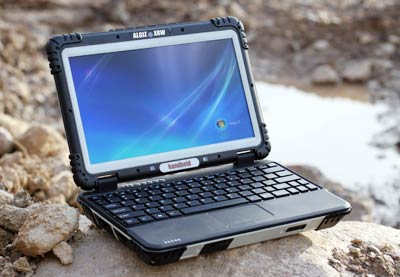
Why do we dedicate a full product page for just a tech update? Because the Algiz XRW, in all likelihood quite unintentionally we imagine, finds itself in a rather unique and quite desirable market position: it's one of the few surviving netbook-class notebooks, and pretty much the only rugged one. While Handheld called the XRW an ultra-mobile notebook, we always viewed it as a fully ruggedized version of those handy little notebooks that fit anywhere and that at one point not so long ago were selling in the tens of millions.
Why am I stressing this netbook reference? Because while netbooks have all but vanished from the market as a result of the tremendous popularity of media tablets, they disappeared for all the wrong reasons. The netbook form factor actually made perfect sense. What's not to like about a small, compact notebook computer that doesn't cost and lot, doesn't weigh a lot, and fits anywhere? The real reason why netbooks disappeared is not so much the tablets (though they certainly contributed to the netbook's demise), but the fact that customers expected notebook performance and features at a netbook price. Microsoft and Intel, of course, couldn't allow that as powerful inexpensive netbooks would have cannibalized higher end notebooks. So netbooks grew in size and power until they really weren't netbooks anymore in either size or cost. And then the tablets finished them off.
The result of all this is that as of early 2013, it became almost impossible to find a good netbook. Most notebooks now have screens between 14 and 17 inches. That's too large and bulky for many applications. Well, anyone who wants a true netbook-size rugged clamshell computer needs to look no farther then the Handheld XRW. Its footprint is just 10.2 x 7 inches, about the same as the once so popular 10-inch netbooks. The XRW is a bit thicker than those old consumer netbooks (1.6 versus 1.3 inches) and weighs a bit more (3.3 pounds versus 2.6 pounds). Considering that the tough little Handheld XRW is almost infinitely more durable than a consumer device, that is a remarkable accomplishment.
There is, of course, one area where the XRW deviates from the consumer netbook formula: whereas consumer netbooks were small and handy and cost very little, the XRW, as an ultra-rugged professional device, is small and handy but costs a lot. Truly rugged machinery always does.
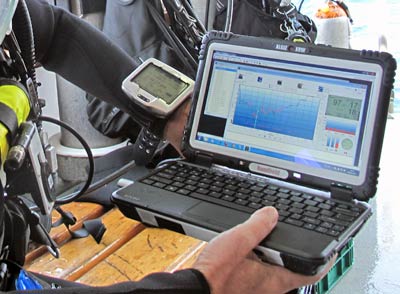
It's worth mentioning that the Handheld Group was aware of the netbook performance predicament even when the XRW was first conceived in 2010. They knew that customers loved the small netbook form factor, but not so much their marginal performance and — particularly — not the neither-fish-nor-fowl 1024 x 600 resolution that always seemed to cut off part of standard 1024 x 768 XGA software layouts. So they gave the initial XRW not the Atom N270 ubiquitous to all those millions of consumer netbooks, nor the Atom Z530 that powered numerous early Atom-based industrial devices. Instead, they picked the seldom-used and more powerful 2.0GHz Atom Z550. And the XRW had acceptable 1366 x 768 pixel WXGA resolution that allowed viewing full XGA layouts and then some, and it was of a sunlight-readable variety that Handheld calls "MaxView."
So what's new?
But let's see what exactly Handheld changed in the new 2013 version of the XRW:
- The old single-core Atom Z550 has been replaced with a dual-core Atom N2600.
- The 128GB SSD is twice the size of the original, and it uses the much faster SATA interface instead of PATA.
- RAM memory has doubled to 4GB of faster DDR3. More RAM is always good, and DDR3 is more power-efficient.
- The GPS is now a u-blox WAAS/EGNOS/MSAS-capable module and should offer much better field performance
- There's now optional Gobi 3000 instead of Gobi 2000. Gobi 3000 doubles the HSPA downlink speed.
- There's a TPM (Trusted Platform Module) module for data security.
Note that the N2600 processor used in this new version of the Algiz XRW is not a successor to the Z550 "Silverthorne" chip used in the original XRW. Instead, it's a third generation descendent (codenamed "Cedarview") of the Atom N270 processor that powered tens of millions of netbooks. The N2600 (and a slightly faster N2800 version) was introduced in late 2011 and arrived at a time when netbooks already had become all but replaced by tablets.
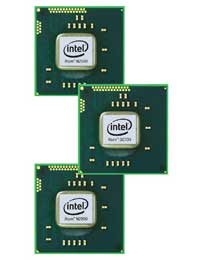 Cedarview is the first Atom family to use 32nm process technology instead of the older 45nm, making for smaller, more efficient packages. All members of the Cedarview processor family are dual-core systems whereas before only desktop-oriented Atom versions had two cores. Graphics performance benefits from a different design and much faster clock speed, resulting in Intel claims of 2X graphics performance compared to the second generation Atoms. And integrated hardware-accelerated video decoding finally enables smooth full HD (up to 1080p) video playback. Cedarview is the first Atom family to use 32nm process technology instead of the older 45nm, making for smaller, more efficient packages. All members of the Cedarview processor family are dual-core systems whereas before only desktop-oriented Atom versions had two cores. Graphics performance benefits from a different design and much faster clock speed, resulting in Intel claims of 2X graphics performance compared to the second generation Atoms. And integrated hardware-accelerated video decoding finally enables smooth full HD (up to 1080p) video playback.
The N2600 uses the Intel NM10 Express chipset already available for second generation Atom processors. Thanks to the 32nm process technology and additional power conservation measures, the N2600 has a maximum thermal design power of just 3.5 watts, considerably less than the 5.5 watts of the second-gen N450. The NM10 Express chipset is miserly as well, with a TDP of just 2.1 watts, making for a combined CPU/chipset maximum draw of just 5.6 watts.
After initially guesstimating the performance of the upgraded XRW, we had a chance to benchmark a production XRW in May 2013. The tablet below shows the benchmark performance of the new version of the Handheld Algiz XRW compared to the original.
|
Handheld Algiz XRW Benchmarks New vs. Old (PassMark 6.1, 32-bit version)
|
|
PERFORMANCE COMPARISON
|
Algiz XRW 2013
|
Algiz XRW original
|
|
Processor Type:
|
Intel Atom
|
Intel Atom
|
|
Processor Model
|
N2600 dual-core
|
Z550 single-core
|
|
CPU Speed
|
1.60GHz
|
2.00GHz
|
|
Thermal Design Power (TDP)
|
3.5 watts
|
2.4 watts
|
|
Disk
|
128GB SATA SSD
|
64GB PATA SSD
|
|
BatteryMon min draw
|
unavailable
|
5.8 watts
|
|
CPU Mark
|
469.6
|
280.4
|
|
2D Graphics Mark
|
NA
|
80.9
|
|
Memory Mark
|
221.8
|
252.7
|
|
Disk Mark
|
1,631.4
|
175.9
|
|
3D Graphics Mark
|
55.5
|
23.5
|
|
Overall PassMark
|
499.7
|
170.8
|
|
ALU
|
9,941
|
6,622
|
|
FPU
|
7,939
|
5,120
|
|
MEM
|
7,407
|
5,846
|
|
HDD
|
26,656
|
7,299
|
|
GDI
|
1,366
|
23.5
|
|
D2D
|
507
|
2,068
|
|
OGL
|
6,192
|
356
|
|
Overall CrystalMark
|
60,008
|
28,127
|
As excepted, the new Handheld Algiz XRW provides a very significant power boost compared to the original model. Note the massively higher Disk Mark and HDD performance. We had expected much faster disk performance in the new unit due to the switch from PATA (Parallel Advanced Technology Attachment) to the much faster SATA serial version. While SATA SSD performance greatly varies with the particular type and brand of SSD, Handheld certainly found a very speedy one.
Overall, we saw a 2.92X benchmark improvement in the PassMark suite, and a 2.13X improvement in the CrystalMark suite.
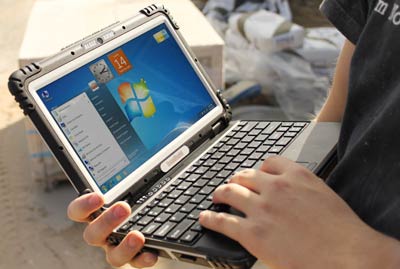
Since we already reviewed the Algiz XRW in detail, those interested in learning more about all aspects of this remarkable little rugged notebook computer may want to read our July 2011 full review of the Handheld Algiz XRW. In addition, we also featured the Algiz XRW in Case Study: Computers in Diving and Marine Exploration where we took an XRW along on a marine expedition to the Socorro islands (also known as the Archipelago Revillagigedo).
The case for the XRW
What's the business case for a small rugged notebook computer? After all, it's a netbook size machine, and while netbooks used to be very popular, they're now virtually all gone. Well, here we need to remmeber the reasons why netbooks vanished: consumers were attracted to their low, low cost, but turned off by their sub-par features and performance. And so they switched to inexpensive media tablets. The situation is very different for the Algiz XRW. It may be netbook-sized, but it's a very tough tool for outdoor jobs, and comes with a price to match. It also offers performance on par with that of high-end Intel Core 2 Duo devices of not so long ago.
How does the XRW compare with a leading full-size rugged notebook such as the Panasonic CF31? For size and weight, the XRW's footprint is 43% smaller, it weighs 63% less (3.3 vs. 8.9 pounds), and it's just over half as thick. The XRW's display is smaller (10.1 vs. 13.1 inches), but the XRW's resolution is actually higher (1366 x 768 vs. 1024 x 768 pixel). The Intel Core-based Panasonic is more powerful and offers excellent battery life, but the XRW can make it through a full shift as well. Both devices carry IP65 ingress protection rating, and both can handle rough handling out there in the field. Both have excellent outdoor-vieable displays. A case can definitely be made for each, but there are clearly times and applications where the smaller size and much lower weight of the XRW make it perfect for the job.
Summary
The Algiz XRW is an ultra-rugged version of a netbook-sized notebook computer. Its small size and weight make it possible to offer the conventional clamshell notebook form factor and functionality in situations and applications where larger, heavier notebooks simply aren't practical.
Technology updates early 2013 include a switch to the significantly more powerful dual-core Atom N2600 processor, twice the (faster DDR3) RAM and twice the disk space, improved GPS and WWAN modules, and TPM for data security.
Apart from its handy size, the device now offers above-average computing power in this class (expect a 2.5x improvement over the original model), while still providing full-shift battery life. The 10.1-inch daylight-vieawable wide-format resistive touch display with its 1366 x 768 pixel resolution is suitable even for information-intensive applications and websites.
The Algiz XRW is rugged enough to be used in almost any environment, and its integrated bumpers protect against dents and scratches.
Like all specialized vertical market computing equipment, the price is much higher than for consumer equivalents, but in terms of functionality to the job and total cost of ownership, the unit is a veritable bargain.
Overall, the newly updated Handheld Algiz XRW even better addresses the needs of anyone who's been looking for netbook size and functionality in a rugged unit.
|
|
|
Specifications Handheld Algiz XRW
|
|
Status
|
09/2010, updated 01/2013
|
|
Type
|
Ultra-rugged notebook computer
|
|
OS
|
Windows 7 Ultimate
|
|
Processor
|
Dual-core Intel Atom N2600, 1MB L2 cache
|
|
CPU Speed
|
1.60 GHz
|
|
CPU TDP
|
3.5 watts
|
|
Chipset
|
Intel NM10
|
|
Standard/Max RAM
|
4GB DDR3
|
|
Disk/drive
|
128GB SSD
|
|
Optical drive
|
Optional external
|
|
Card slots
|
1 SD Card (SDXC-compliant)
|
|
Display type
|
Sunlight-readable "MaxView" TFT
|
|
Display size/res
|
10.1" HD basic (1366 x 768 pixel) with LED backlight
|
|
Digitizer/pens
|
Resistive touch
|
|
Keyboard/scale
|
83-key 90%-scale, LED illumination
|
|
Housing
|
Unknown, protective rubber bumpers
|
|
Operating Temp
|
-6 to 131 degrees Fahrenheit (-21 to 55 degrees centigrade)
|
|
Sealing
|
IP65
|
|
Shock
|
26 4-feet drops to concrete per MIL-STD-810G Method 516.6, Procedure IV
|
|
Vibration
|
MIL-STD-810G, Method 514.5 Procedures I & II, General minimum integrity and the more rigorous loose cargo test
|
|
Altitude
|
15,000 feet (4572 meters) at 73° F (5 Celsius)
|
|
Size (WxHxD)
|
10.2 x 7.0 x 1.6 inches (260 x 178 x 40 mm)
|
|
Weight
|
3.3 pounds (1.5 kg)
|
|
Power
|
Li-Polymer 11.6V, 5,200 mAh, 57.6 watt-hours, "8 hours"
|
|
Interface
|
2 x USB 2.0, 1 x RS232 DB9, 1 x VGA, 1 x RJ45 gigabit, dock, audio in/out, docking connector, stereo speakers, 2mp camera with auto focus
|
|
Wireless
|
802.11b/g/n, Bluetooth 2.0 + EDR, u-blox GPS, optional: Gobi-3000 (HSPA+, quad-band GSM/GPRS/EDGE, CDMA EVDO Rev. A)
|
|
List price
|
US$2,700 range
|
|
Contact
|
www.handheldgroup.com
|
|
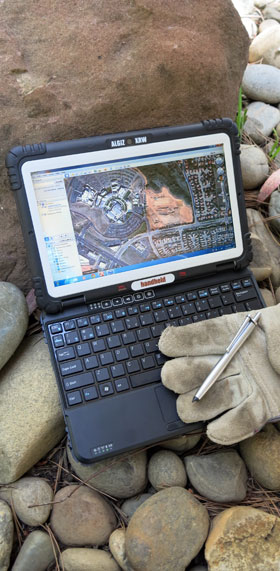
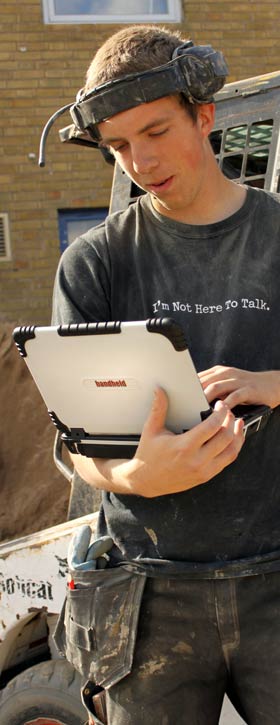
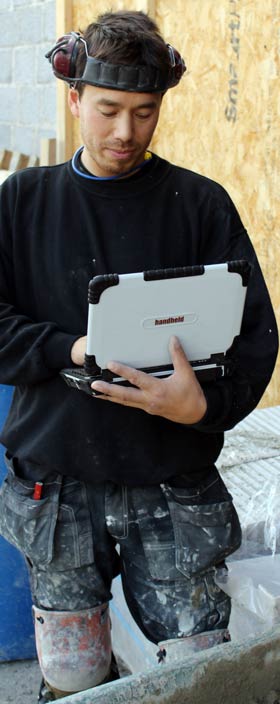
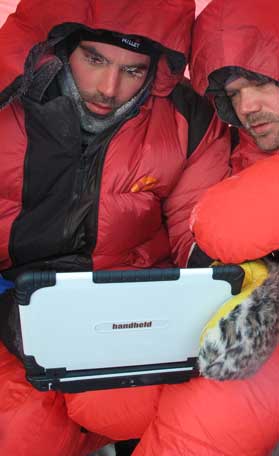
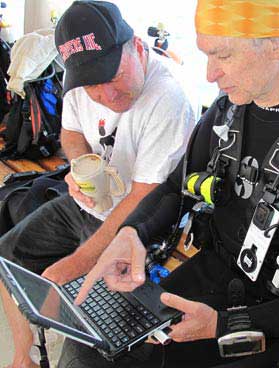
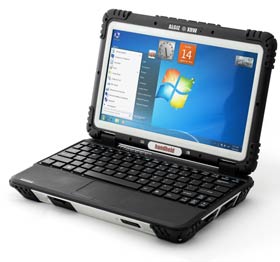
|
|
Contact
|
Handheld Group
Kinnegatan 17 A
S-531 33 Lidköping
SWEDEN
Web: www.handheldgroup.com
HHCS Handheld USA Inc.
456 SW Monroe Avenue, Suite 106
Corvallis, OR 97333, USA
Tel: (541) 752-0313
Fax: (541) 752-0338
Web: www.handheld-us.com
Email: info @ handheld-us.com
|
|






 Cedarview is the first Atom family to use 32nm process technology instead of the older 45nm, making for smaller, more efficient packages. All members of the Cedarview processor family are dual-core systems whereas before only desktop-oriented Atom versions had two cores. Graphics performance benefits from a different design and much faster clock speed, resulting in Intel claims of 2X graphics performance compared to the second generation Atoms. And integrated hardware-accelerated video decoding finally enables smooth full HD (up to 1080p) video playback.
Cedarview is the first Atom family to use 32nm process technology instead of the older 45nm, making for smaller, more efficient packages. All members of the Cedarview processor family are dual-core systems whereas before only desktop-oriented Atom versions had two cores. Graphics performance benefits from a different design and much faster clock speed, resulting in Intel claims of 2X graphics performance compared to the second generation Atoms. And integrated hardware-accelerated video decoding finally enables smooth full HD (up to 1080p) video playback.






